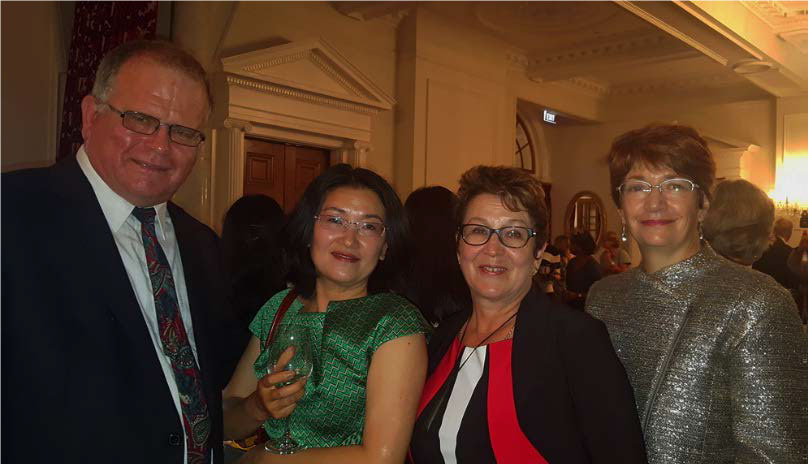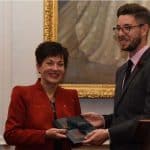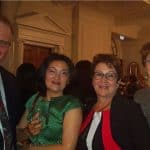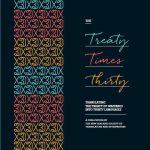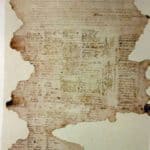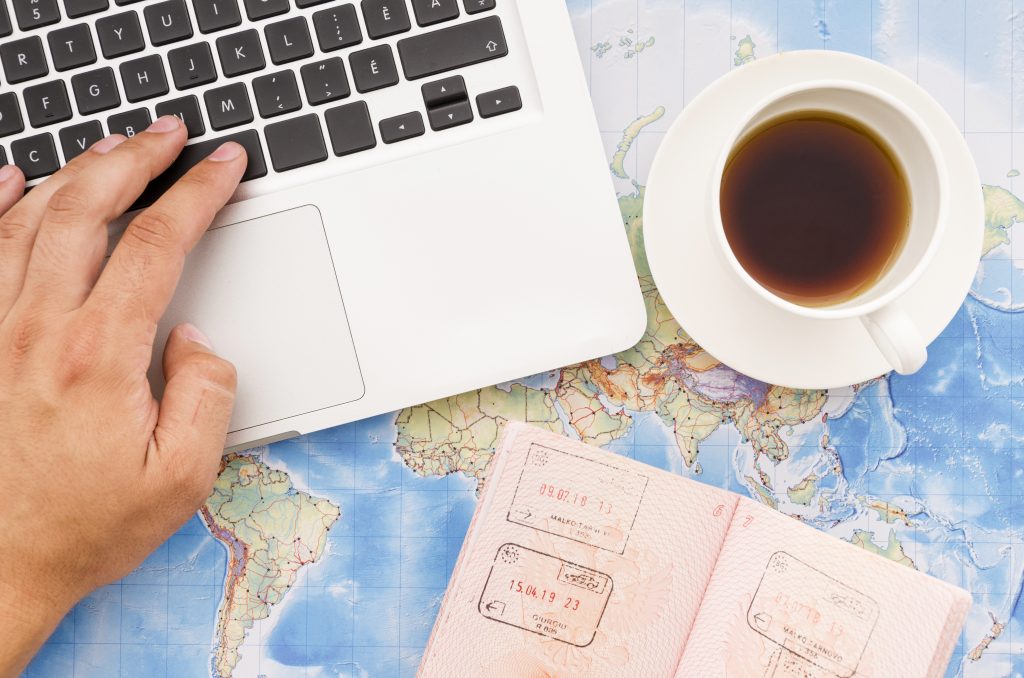A major event of great importance for South Africans and Afrikaans especially has occurred the previous weekend in New Zealand. New Zealand’s ground document, the Treaty of Waitangi, or the Tiriti o Waitangi, is now officially available in Afrikaans. In fact, it is now available in 30 more languages than the two (and English) that has been the case until now. The Afrikaans translation is a product of the hard work of three Afrikaans New-Zealanders, namely Alta Rall (a member of the NZSTI), Dina Cloete and Philip Langenhoven.
Photo left: The Afrikaans translation team: Philip Langenhoven, Xuan Luo (the team’s contact person from the New Zealand Society of Translators and Interpreters [NZSTI]), Alta Rall (member of the NZSTI) and Dina Cloete. Photo right: Dame Patsy Reddy, Governor-General of New Zealand, receives the book from Stefan Grand-Meyer of the NZSTI (Photos: Adalen Photography)
A major event of great importance for South Africans and Afrikaans especially has occurred the previous weekend in New Zealand. New Zealand’s ground document, the Treaty of Waitangi, or the Tiriti o Waitangi, is now officially available in Afrikaans. In fact, it is now available in 30 more languages than the two (and English) that has been the case until now. The Afrikaans translation is a product of the hard work of three Afrikaans New-Zealanders, namely Alta Rall (a member of the NZSTI), Dina Cloete and Philip Langenhoven.
The Treaty Times Thirty Project was launched about 18 months ago by the New Zealand Society of Translators and Interpreters (NZSTI) to translate and publish in book format the Treaty of Waitangi in 30 other languages in New Zealand as part of its thirtieth anniversary. 17 February 2017 saw the culmination of their efforts when the book was presented to Dame Patsy Reddy, New Zealand’s Governor-General, by Stefan Grand-Meyer, a representative of the NZSTI.
The translation process required each translation to be independently carried out by three translators, who afterwards worked together to compare their translations and present a final, best version. An authoritative person from their community who is proficient in the target language then had to review their final translation and comment on the flow of language and the register. The team approached two reviewers, Mr Gregory Fortuin of Parirua and Dr Stanley Theron from Auckland, as they felt that the honour was due to them for their ground-breaking work in New Zealand..
Mr Fortuin used to be New Zealand’s Race Relations Conciliator (appointed by the New Zealand Government) and was South Africa’s Honorary Consul in New Zealand – an appointment that he had accepted a volunteer as there had not yet been a High Commissariat in New Zealand.
Dr Theron was co-founder of the first Afrikaans congregation in New Zealand under instruction of the Dutch Reformed Church. Within months, the congregation, who was active in Howick, amalgamated with the Afrikaans Christian Church North Shore in Auckland. Dr Theron is an emeritus minister who has been active at his Bible Academy that facilitates non-English church leaders.

to r. is the reviewer Gregory Fortuin, Dame Claudia Orange (Treaty Expert), the reviewer Dr Stanley Theron, the translator Philip Langenhoven, the South African High Commissioner Mrs Zodwa Lallie and the translators Alta Rall and Dina Cloete. (Photo: Adalen Photography)
Most of the translators and some of the reviewers came together to celebrate the historic event under a painting of King George V looking very sternly down on everyone in the great function hall, as well as a beautiful painting of Queen Elizabeth that added more brilliance to a splendid, stately evening’s events. Exquisite wines and finger foods, carried around by dashing young waiters and waitresses, made you feel well-treated.
But more about the Treaty of Waitangi. It was written over a period of seven days and took seven months to be signed by all possible Maori chiefs (that is, every chief who couldn’t attend the historic first day). It has also been debated from all sides for almost 170 years.
The Treaty was signed on 6 February 1840 by representatives of the British Crown and various Maori chiefs of the Northern Island of New Zealand. A direct result was that Lieutenant-Governor declared British sovereignty over New Zealand in May 1840.
Because the Treaty was drafted so quickly (in a few days) and was translated to Maori literally overnight, the translation of certain core words missed the mark – an issue that lead to many court battles over more than a century. And because of these interpretational differences between the two language versions, the Court realised that certain principals exist in the Treaty that had to be highlighted to promote unity in terms of the true rationales for the Treaty, an understanding of what had been agreed to and the honest meaning behind the Treaty. These principals were then neatly explained and helped New Zealand to develop its unique, bicultural character.
The Court of Appeal decided on the following in the ruling by the then President of the Court, Sir Robin Cooke:
- Obtaining sovereignty by the British Crown in exchange for the protection of the rangatiratanga, or absolute sovereignty over Maori interests, as agreed on.
- The Treaty established a partnership and with it made the partners responsible for acting reasonable and in good goodwill.
- Freedom of the Crown to rule over New Zealand.
- The Crown’s obligation to actively protect Maori interests.
- The Crown’s obligation to rectify violations of the past (in terms of Maori interests).
- Maori retains rangatiratanga over their resources and treasures (taonga – including cultural treasures) and obtains all privileges of citizenship.
- The obligation of the Crown to consult Maoris on all matters that may potentially implicate or concern them.
This article was provided to Wêreldwyd by Brokkies. Brokkies is a free e-newsletter that is primarily aimed at South African immigrants residing in New Zealand and Australia. Visit www.brokkies.net to subscribe, contribute or advertise.



